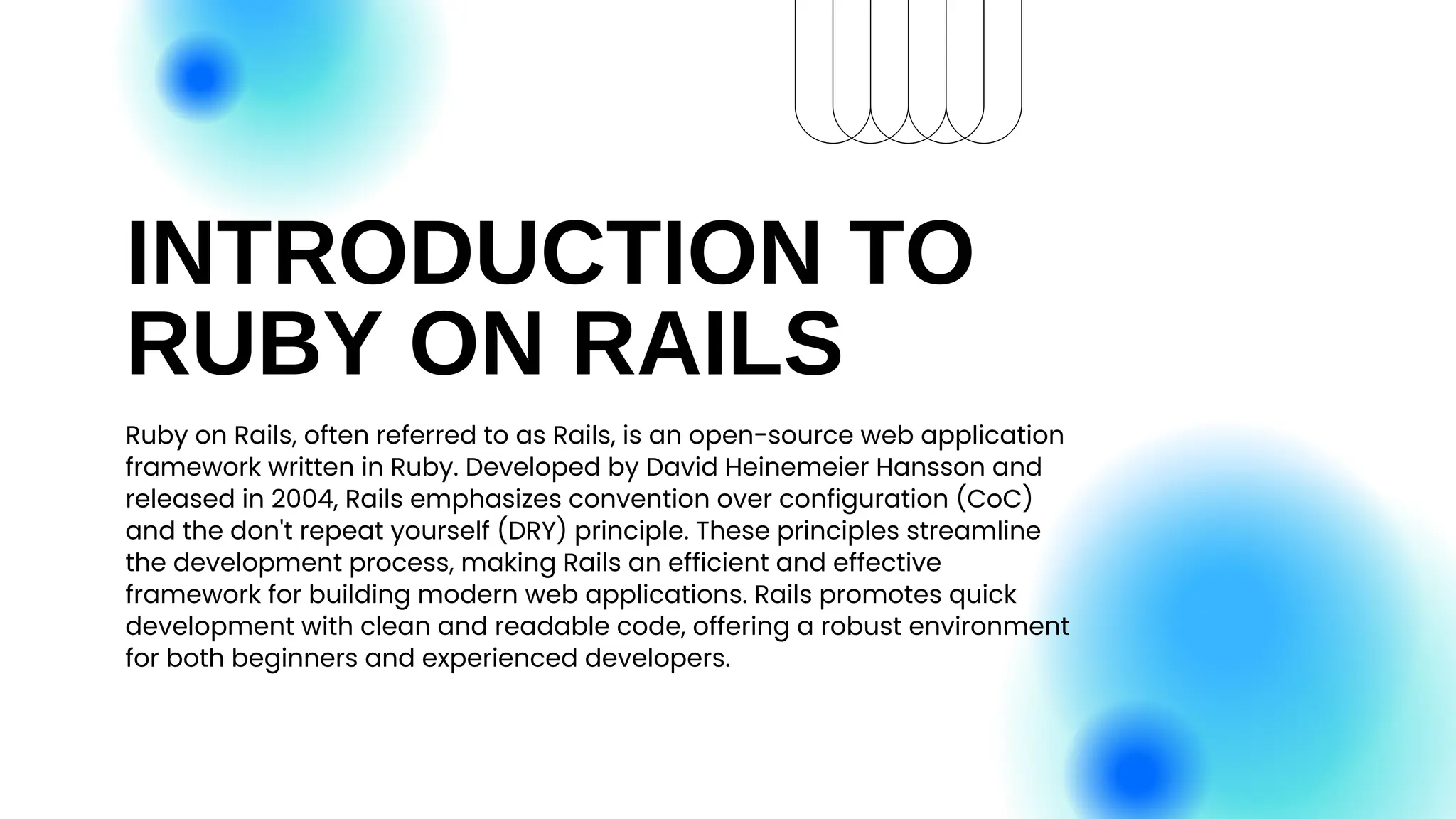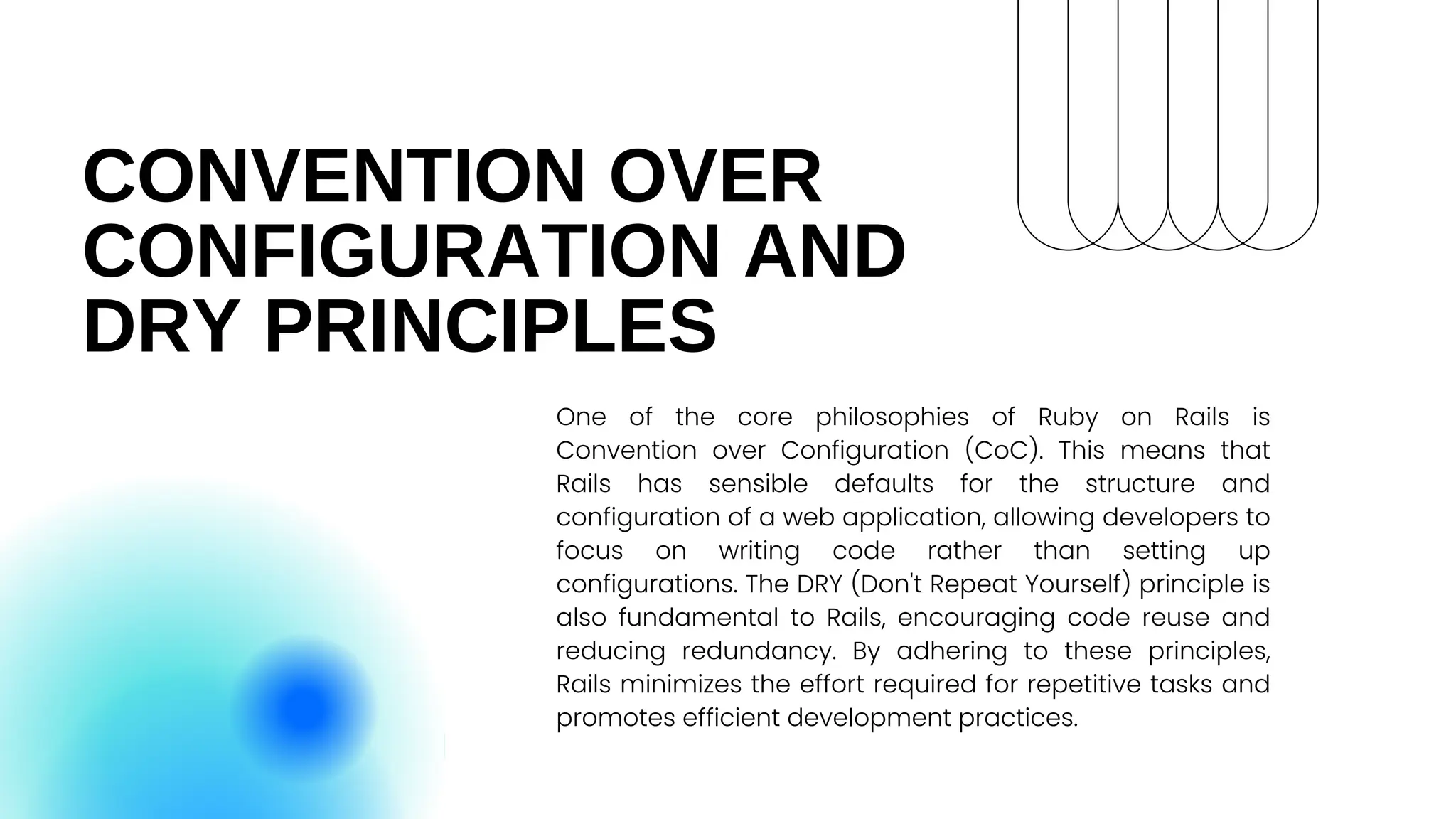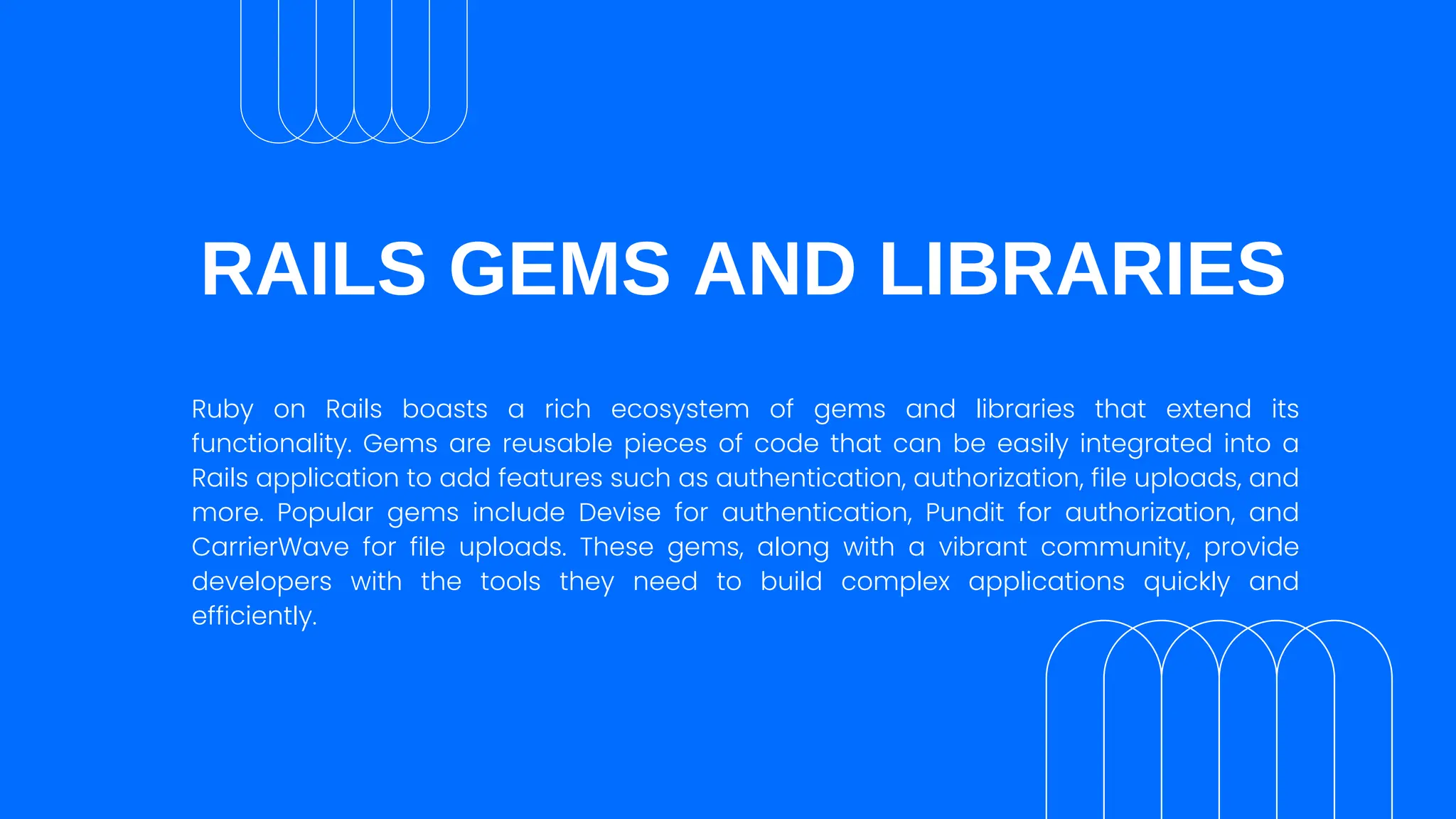Ruby on Rails is an open-source web application framework written in Ruby, emphasizing convention over configuration and the don't repeat yourself principle to streamline development. It follows the model-view-controller architecture, promoting organized code, and has a rich ecosystem of reusable gems for added functionality. Rails is advantageous for rapid development and is well-suited for various web applications, with notable companies like GitHub and Airbnb using it.





